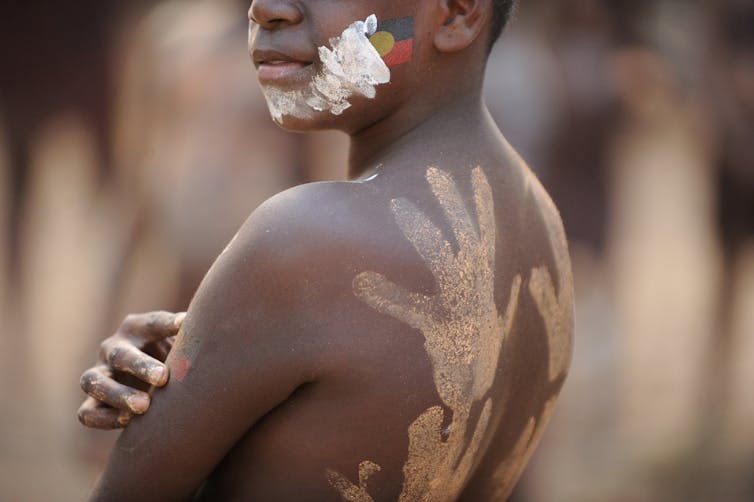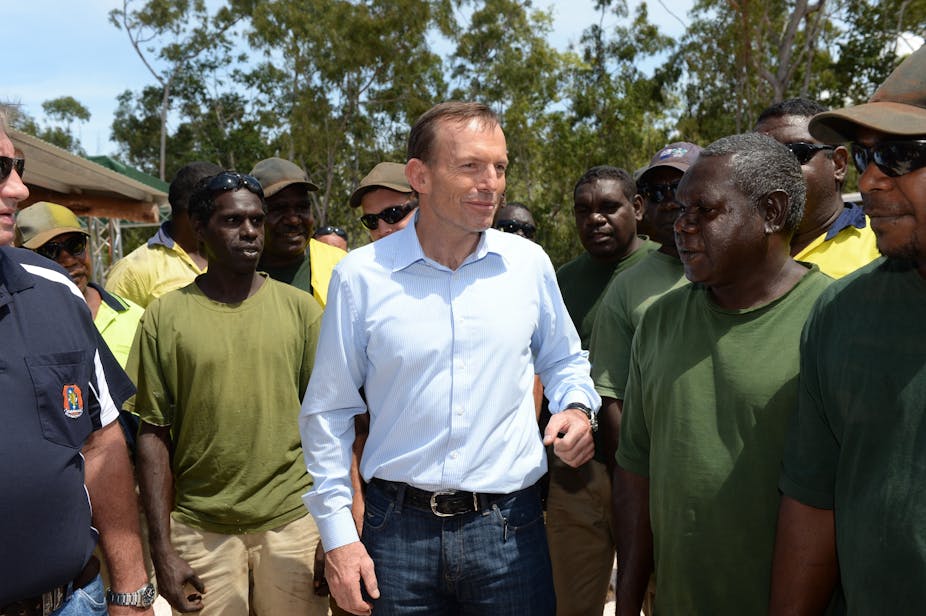Despite prime minister Tony Abbott’s apparent passion for Indigenous affairs, last week’s federal budget – his government’s first – shows he has followed a well-trodden political path.
This path leads from statesman-like pronouncements, about fundamental change to the relationship between Indigenous and non-Indigenous Australians, to neglect, cuts and harsh policy measures. While it is never unexpected, this change is always disappointing.
A passionate commitment?
Before the election, Abbott promised he would be:
…a prime minister for Aboriginal Affairs. The first I imagine that we have ever had.
Abbott has often spoken of his own personal journey in relation to Indigenous issues. After a transformative friendship with Aboriginal leader (and former ALP national president) Warren Mundine, Abbott declared earlier this year that he was on a:
…personal mission to help my fellow Australians to open their hearts, as much as to change their minds, on Aboriginal policy.
However, in the months since his election, Abbott has not devoted a great deal of time to this issue. He is yet to fulfil his promise to spend a week a year living in a remote Indigenous community. He did set up an Indigenous Advisory Council headed by Mundine, but in turn sidelined the elected National Congress of Australia’s First Peoples. That body’s funding was cut in the budget.
Budget impact
The budget is Abbott’s first substantive policy announcement in relation to Indigenous affairs, and should be evaluated as such.
Indigenous people were not a political focus in the budget and treasurer Joe Hockey did not mention them in his budget speech. In some ways, however, this is a good thing. Indigenous people are too often used as political footballs on issues of “entitlement” and welfare.
Despite this, Indigenous people are one of the major losers from last Tuesday night in two key ways. Firstly, the budget directly cuts over A$500 million from the Indigenous affairs budget. This goes against the Coalition’s pre-election commitment that it would:
…continue the current level of funding expended on Closing the Gap activities.
Hockey argues that these savings will flow from bureaucratic mergers and reshuffling as 150 programs will be consolidated into five. He said this would have no impact on frontline services to close the gap.
Few would suggest that there are not problems in Indigenous administration. These include departmental silos, heavy reporting burdens and insecure funding streams. However, the budget seemed aimed at saving money rather than genuinely improving service delivery.
And without proper justification, another bureaucratic reshuffle is the last thing federal Indigenous policy needs. The sector has been in constant flux over the past decade, wasting administrative energy and losing corporate knowledge.
Secondly, Indigenous Australians will be hit hard by cuts to mainstream health and education. Since the end of the Aboriginal and Torres Strait Islander Commission (ATSIC), most services to Indigenous Australians have not been delivered through Indigenous-specific programs.
Therefore, mainstream service cuts will have a direct and disproportionate impact upon the disadvantaged Indigenous population. To take two examples:
The proposed $7 GP co-payment will discourage many Indigenous people from accessing health care, especially preventative checks. This will have a significant impact on long-term health outcomes. Community health clinics have indicated that they will try to absorb the cost rather than pass it on to clients, but this will effectively cut funding from frontline services.
The pension age will be raised to 70, whereas the life expectancy of an Indigenous man is 69. This is a clear example of a “universal” measure systematically disadvantaging Aboriginal people.
According to Aboriginal and Torres Strait Social Justice Commissioner Mick Gooda, Indigenous people – or their representative organisations – had “little or no input” to the policy measures contained in the budget. Abbott, it would seem, has quietly turned away from his commitment to working “with” rather than “for” Aboriginal people.

So, what happened?
It is tempting to follow the current wave of criticism of the budget and see this as another example of the Abbott government being “mean” to those who are disadvantaged, and breaking promises for the sake of it. Even the more generous version has Abbott as good at talking big in opposition, but not equipped to follow this through in the messy, negotiated work of government.
But both these analyses are too easy. In the complex area of Indigenous affairs, it is not a matter of Abbott or any other leader failing personally. Rather, this is an ongoing pattern that reflects both the current framing of politics and policy as distinct, and the structural privilege of non-Indigenous Australia.
Since the Howard era, Indigenous policy has reflected an implicit separation between “symbolic” and “practical” reconciliation – or, put more simply, between politics and policy. The apology to the Stolen Generations, constitutional change, a “new engagement” are high-level, emblematic changes that are somehow meant to realign our relationships on the ground.
Policy, on the other hand, is seen as a technical exercise in closing the gap between Indigenous and non-Indigenous Australia. It is to be directed by expertise rather than representation (or even consultation). In this environment, a “new engagement” with Indigenous Australia can easily co-exist with unilateral efficiency dividends and exhortations to “normalise” Aboriginal communities in the name of Closing the Gap.
Also, the unhappy reality is that most non-Indigenous people can choose when and how to engage with Indigenous Australia. They might make an Aboriginal friend, visit remote communities or “open their hearts”. But when this becomes difficult or personally challenging, they can withdraw without political cost or impact on their own lives.
This is real privilege. Indigenous people, on the other hand, cannot forget that they are part of this often destructive and unequal relationship.
This is not to say that an individual leader from the majority non-Indigenous population cannot make a real difference. If they are willing to spend political capital on this issue they could genuinely redistribute decision-making authority over Indigenous lives.
For a while, it seemed possible that Abbott would be this leader. But so far he hasn’t been, and now he is struggling for political capital to spend.

